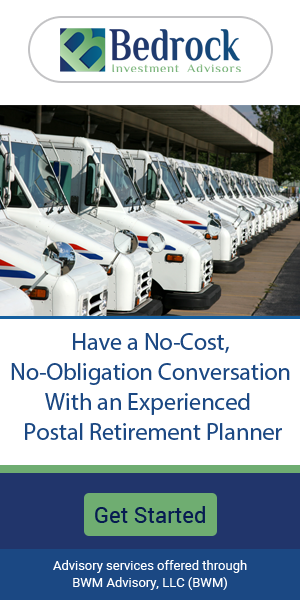Key Takeaways
-
Proper timing of Medicare Part B enrollment is crucial if you want to avoid lifelong penalties and get the most value from your FEHB plan.
-
The FEHB-Medicare combination can reduce out-of-pocket healthcare costs significantly—but only if coordinated within the right enrollment windows.
Why Enrollment Timing Matters More Than You Think
When it comes to retirement planning, many government employees assume that staying enrolled in the Federal Employees Health Benefits (FEHB) Program is enough. And for many years, it might be. But the moment you become eligible for Medicare—usually at age 65—your decisions can make or break the financial efficiency of your healthcare coverage.
- Also Read: FAA, Law Enforcement, and Special Federal Employee Categories—Here’s What Makes Their Retirement Unique
- Also Read: Blending Private and Public Sector Retirement Plans Is Complicated—Here’s Where Couples Get It Wrong
- Also Read: The Silent Shift in Postal Service Retirement Benefits That Could Change Everything by 2026
Your Medicare Initial Enrollment Period (IEP)
Most government retirees become eligible for Medicare at age 65. The Initial Enrollment Period (IEP) is your first chance to sign up for Medicare and lasts for seven months:
-
Three months before your 65th birthday
-
The month of your birthday
-
Three months after your birthday month
If you don’t enroll during this period and don’t have other qualifying coverage, you risk late enrollment penalties and a delayed start date for your benefits.
What Happens If You Miss Your IEP
Missing your IEP means waiting for the General Enrollment Period (GEP), which runs from January 1 to March 31 every year. If you enroll during the GEP, your Medicare coverage won’t start until July 1, and you’ll likely face permanent late enrollment penalties.
The penalty for Part B is especially costly. It adds 10% for each full 12-month period you delayed enrollment after your IEP—unless you had qualifying coverage. The penalty stays with you for life.
Qualifying Coverage That Lets You Delay
As a federal retiree, your FEHB coverage does not count as active employment coverage once you retire. That means you cannot delay Medicare Part B enrollment past age 65 without incurring penalties unless you are still employed in a position offering FEHB.
If you’re still working at 65 and covered by FEHB through current employment (either yours or your spouse’s), then you can delay Medicare Part B without penalty. But once you retire, the clock starts ticking.
Coordinating FEHB With Medicare at the Right Time
When timed correctly, enrolling in Medicare Part B while keeping your FEHB plan gives you layered protection:
-
Medicare pays first (primary), and FEHB pays second (secondary).
-
Your out-of-pocket costs may decrease significantly.
-
Some FEHB plans waive deductibles or offer reduced copayments when Medicare is primary.
This setup can shield you from high medical costs and provide broader access to healthcare providers.
What to Do If You’re Nearing Age 65
If you’re approaching 65 and planning to retire:
-
Mark your Initial Enrollment Period. Know the start and end dates.
-
Decide whether you’re keeping FEHB. Most retirees do, and for good reason.
-
Apply for Medicare Part A. It’s usually premium-free and offers hospitalization coverage.
-
Evaluate your need for Part B. If you’re retiring at 65, enroll during your IEP to avoid penalties.
Why Some Retirees Delay Part B—And Why That Can Backfire
Some retirees choose to delay Medicare Part B to avoid the monthly premium. While the standard premium in 2025 is $185 per month, skipping Part B can leave you underinsured and facing higher long-term costs.
FEHB plans are not required to cover everything Medicare would. For example, some services may not be fully covered without Medicare’s coordination, leading to surprise bills.
Additionally, you won’t be able to take advantage of the cost-sharing benefits that many FEHB plans offer to Medicare-enrolled retirees.
Medicare and FEHB: What Each Covers
Understanding what each program offers helps you see why both are important:
-
Medicare Part A: Inpatient hospital stays, skilled nursing care, hospice.
-
Medicare Part B: Outpatient care, doctor visits, durable medical equipment.
-
FEHB: Broader coverage including prescription drugs, dental and vision in some plans, and provider network flexibility.
FEHB alone may seem sufficient, but without Medicare Part B, you’re relying entirely on a plan that assumes Medicare is in place.
Common Scenarios That Lead to Mistimed Enrollment
Several missteps can lead to bad timing, such as:
-
Retiring right before 65 and assuming FEHB acts as qualifying coverage.
-
Forgetting to enroll in Part B during your IEP.
-
Misunderstanding the Special Enrollment Period rules.
-
Listening to outdated advice from colleagues who retired under different rules.
You can avoid these problems with a proactive enrollment strategy.
How Special Enrollment Periods Work
You may qualify for a Special Enrollment Period (SEP) to sign up for Part B without penalty if:
-
You had FEHB coverage due to current employment (not retirement).
-
You apply for Medicare within 8 months of employment ending.
If you miss this 8-month window, the penalty will apply, and your coverage will be delayed until the next GEP.
FEHB + Medicare in 2025: What Changes and What Stays the Same
As of 2025, FEHB plans still offer:
-
No required Medicare enrollment to keep your plan.
-
Continued federal government premium contributions.
-
Prescription drug coverage included in most plans.
But the landscape is shifting:
-
Out-of-pocket costs in many FEHB plans increase without Medicare Part B.
-
More plans are introducing cost-sharing incentives for Medicare-enrolled members.
-
Medicare Part D has a $2,000 cap on out-of-pocket prescription drug expenses, which complements your FEHB coverage.
Should You Ever Drop FEHB After Enrolling in Medicare?
In most cases, no. Dropping FEHB removes one of your most powerful healthcare safety nets. The only time it makes sense is if you:
-
Have qualifying coverage through a spouse’s employment.
-
Move to a retiree health plan that explicitly replaces FEHB.
Even then, be cautious. If you cancel FEHB in retirement, you generally can’t reenroll.
The Best Time to Review Your Coverage
The ideal review window is 3-6 months before you turn 65. At this point, you can:
-
Confirm your retirement timeline.
-
Review FEHB brochures for Medicare coordination.
-
Contact Social Security to initiate Medicare enrollment.
-
Consider speaking with a licensed agent listed on this website to fine-tune your decision.
This proactive review ensures you don’t get locked into high costs or coverage gaps.
Coordinating Benefits Can Help You Save
When timed correctly, your FEHB and Medicare benefits will:
-
Fill each other’s coverage gaps.
-
Reduce or eliminate copayments and coinsurance.
-
Lower your total out-of-pocket medical expenses.
-
Help you avoid unexpected bills from services Medicare covers but FEHB doesn’t fully cover alone.
You Only Get One Shot at This
Unlike employer coverage you can change annually, Medicare Part B enrollment has permanent consequences. If you get the timing wrong, the penalties stick. So does the delay in coverage.
That’s why getting the timing right the first time is critical.
Don’t Let Missed Timelines Undermine Your Retirement Healthcare
The FEHB-Medicare combination gives you a powerful shield in retirement—but only if you enroll in Medicare Part B at the right time. Delaying or skipping that step could leave you exposed to penalties, higher costs, and limited care options.
To make confident choices, review your options early and speak with a licensed professional listed on this website. With proper timing, you can ensure a smoother, more secure retirement.













